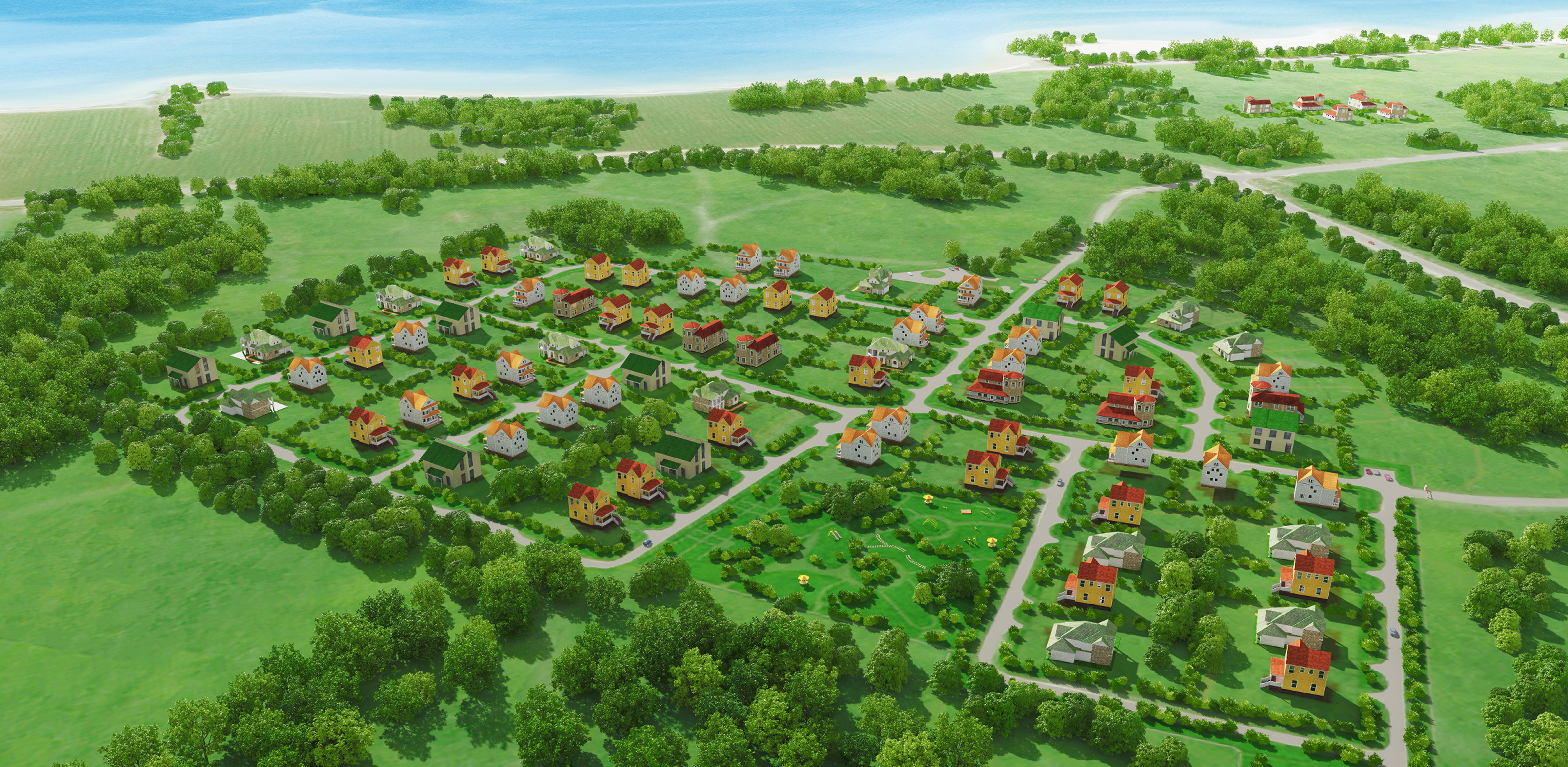Soils and Biodiversity Net Gain – by Chris Stapleton
This blog first appeared on Chris Stapleton’s LinkedIn. Chirs will be speaking at CIEEM’s upcoming conference ‘The Role of Soils in Nature Recovery.’
The key principle is to match available soil types with the requirements of proposed habitats, and this will help to determine the scope for BNG. It will also optimise prospects for the successful establishment and maintenance of habitats created and translocated, with significant implications for sustainable BNG. Basically, the soils available on a site must be suitable for the habitat that is to be created or translocated. What is already present on site or nearby may provide useful clues to what is possible.
Soil surveys and sample analysis provide an understanding of the soil types on a site prior to development, and this should inform the selection of the most appropriate BNG habitat option. The scope of information required from soil surveys for ecology is set out in Annex H of the IEMA guidelines.
Natural Associations of Soil Types and Habitats
Annex F of the IEMA guidelines show how our most ecologically valuable habitats have formed naturally on a range of soil types on parent materials in certain topographic and hydrological situations. These soil types are often associated with low nutrient levels, high pH (alkaline/calcareous) or low pH (acidic) value soils, and in some cases high water tables. They include:
- high altitude peats and organo-mineral soils with a semi-natural ground cover where there is impeded drainage due to high altitude and rainfall, heavy soils, and/or shallow gradients over wide interfluves;
- lowland peats, calcareous Fens, acidic Bogs, transition mires, and other wetlands in poorly drained receiving sites over clays and silts with high water tables (e.g. on floodplains);
- lowland heathland and acidic grasslands on freely draining sandy and gravelly parent materials. Displaced sandy arable soils have considerable potential for conversion to such habitats because nutrients leach more rapidly from them. Over time, they become the type of soils (known as podzols) associated with existing lowland heathland; and
- chalk rock, or chalky Boulder Clay and limestone rocks have alkaline soils with high pH values which form a suitable substrate for calcareous grassland.
The re-use of available soils within a site should seek to replicate these associations of soils, topography, and habitats in a way that is consistent with and appropriate to the wider area, to ensure that a habitat “belongs” in a location. When the less favourable soil types (from an agricultural perspective) described above are displaced by development they are likely to be more successfully used for ecological purposes.
Different proportions of sand silt and clay are classified into soil texture classes, as shown on the texture triangle below. The yellow zone in the triangle shows the most favourable loamy texture classes from an agricultural perspective, for both topsoils and subsoils.
Soils with loamy topsoils and upper subsoils can support mesotrophic (neutral) grassland, but they tend to be associated with higher quality agricultural land with accumulated moderate to high levels of nutrients from fertiliser applications, and neutral pH levels. Whilst such soils can be usefully re-purposed to create high diversity grasslands such as the Lowland Meadow Priority Habitat type created within a SANG and shown on photos 1 and 2 (provided courtesy of Ecological Planning and Research). An initial period of either forced nutrient reduction or high-intensity aftercare may be needed to prevent valuable habitats being lost to competition with vigorous agricultural grasses and weed species in the early years. Photos 3 to 8 (also provided by EPR), show other examples of soil, habitat, and species associations.
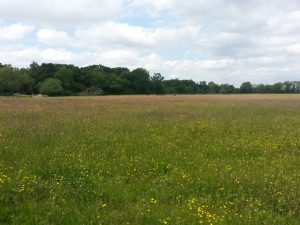
Photo 1 Loamy Soil: Lowland Meadow Priority Habitat

Photo 2 Loamy Soil: Lowland Meadow Priority Habitat
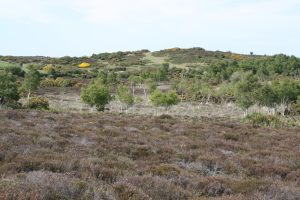
Photo 3 Sandy Soil: Heathland and Acid Grassland

Photo 4 Sandy Soil: Heathland Heather, Gorse and Silver Birch
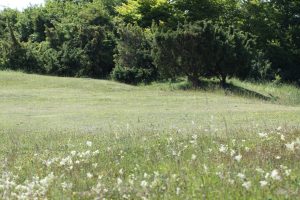
Photo 5 Chalk Soil: Species Rich Calcareous Grassland, Dropwort and Juniper Bushes
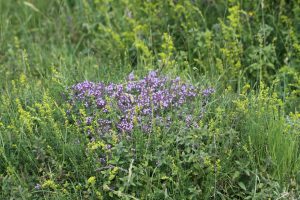
Photo 6 Chalk Soil: Species Rich sland, Wild Thyme, Ladies Bedstraw and Wild Basil

Photo 7 Acid Bog and Peat Soil
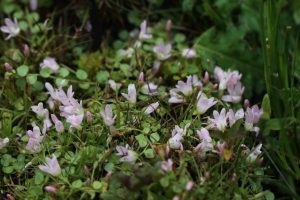
Photo 8 Acid Bog and Peat Soil: Bog Pimpernel
Habitat Creation
This tends to be the conversion of land previously managed for agriculture or forestry to wildlife habitats, on sites where existing soils must be used and the nutrient levels (N, P, K and Mg) must be reduced to establish a semi-natural ground cover. Habitats should be selected which can be supported by the existing soil profile. The partial or complete removal of nutrient-rich topsoils (where subsoils remain in-situ), and the mixing of topsoils and subsoils to slowly reduce ground surface nutrient levels are a loss or degradation of the soil resource and not recommended for on-site habitat creation. Topsoil removal is appropriate at receptor sites in preparation for habitat translocations, however (see below).
Soil information derived from soil survey and sample analysis helps to plan soil handling in Soil Resource Plans, and an appropriate subsequent management regime for reducing soil nutrient levels.
When considering the establishment of a habitat on undisturbed agricultural land many sites will have “middle of the road loamy soils” (described above) with slightly acid pH values of 5 to 6, and the focus will be on reducing nutrient levels. One nutrient stripping technique is the removal of nutrients in harvested crops (like nutrient hungry barley) and their residues. This approach will require intensified management in the early years with additional seasonal cuts/topping and grazing to suppress the growth of grass and weeds, until native forbes can “hold their own”. A more natural approach is the longer-term leaching of nutrients to watercourses and groundwater. Loams with higher clay contents (e.g. clay loams, sandy clay loams and silty clay loams) will prolong these processes, because the clay retains nutrients.
Habitat Translocation
Habitat translocation often involves the disturbance of soils at both donor and receptor sites, although an element of translocation can also occur for existing habitats within development sites. The soils being moved from a donor site bring with them the soil textures and structures, pH and nutrient levels that are an intrinsic component of the habitat being translocated. Sometimes they might also bring important biological components like seed banks or fungal mycorrhizae. Therefore, a particular requirement for habitat translocation is to match the donor and receptor site soil profiles, in terms of the physical properties of both topsoils and subsoils if possible. It is also necessary to replicate the donor site landform and hydrology (e.g. surface water drainage and ground water levels) at the receptor site prior to the placement of soils.
In addition to informing soil handling in Soil Resource Plans, soil surveys and sample analysis in this context will provide a comparison of soil types at the donor and receptor sites, and a statement of the suitability of the soils at the proposed receptor site for the translocation. They will also inform any location-specific provisions that may be required for soil handling. If the soils can be matched, this will require the translocation of topsoils only. Where the ecological interest is primarily annuals (e.g. grassland) it may be sufficient to strip and loose-spread topsoils. For sensitive perennials or orchids it may be necessary to translocate intact turves.
If necessary, and following translocation of the donor site topsoils, the chemical properties of the in situ undisturbed subsoils can then be gradually changed through the longer-term management of the receptor site.
Photos 9 to 15 illustrate some of the soil handling operations for the translocation of topsoil.

Photo 9 Receptor Site: Stripping Topsoil for Habitat Translocation
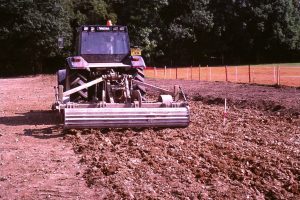
Photo 10 Receptor Site: Preparing Subsoil Surface
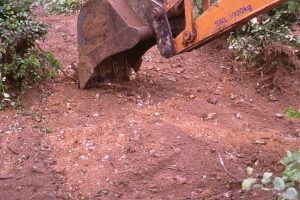
Photo 11 Donor Site: Stripping Topsoil
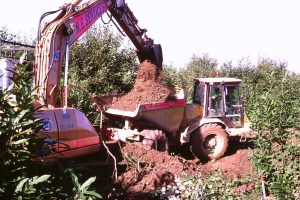
Photo 12 Donor Site: Loading Topsoil
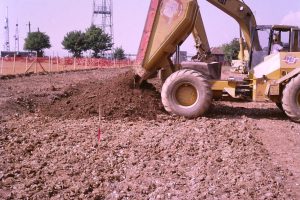
Photo 13 Receptor Site: Loose Tipping Topsoil
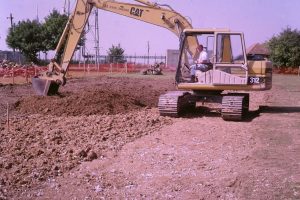
Photo 14 Receptor Site: Spreading Topsoil
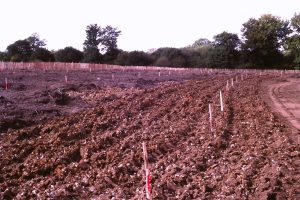
Photo 15 Receptor Site: Topsoil Reinstated in Strips
If it is not possible to match the receptor and donor site soil profiles, it might be necessary to remove both topsoils and subsoils from the receptor site and then import both topsoils and subsoils from the donor site. However, when subsoils (in particular) are disturbed at the donor site they can significantly increase in volume, and the relationship between different subsoil textures and bulking rates is not well understood. Therefore, the translocation of both topsoils and subsoils introduces a greater degree of uncertainty over the settled volume of the translocated soils when they are spread at the receptor site. The on-site management of soil handling must therefore ensure that the reinstated receptor site ground surface levels match those of adjacent land on completion of soil reinstatement to avoid creating a different hydrological regime at the receptor site. This can be achieved by progressive restoration where the receptor site subsoils are stripped in stages to accommodate incoming volumes of subsoils to the required thickness.
A soil aftercare period may be required for the recovery of soil structures and drainage. It will be necessary to avoid traffic over wet soils with machinery, and to use appropriate livestock for conservation grazing when soils are sufficiently dry.
Soil Handling Methods
There is extensive published guidance on soil handling methods and construction site management for soil conservation, but methods for habitat creation and translocation can be markedly different to those for the restoration of land for agriculture, depending largely on the size, shape, topography, and hydrology of a site.
Methods of stripping, storing and reinstating soils, and soil cultivation on agricultural land can also be suitable for the creation and translocation of habitats where there is sufficient space within a site, and access to land with shallow gradients with slopes in the range from 1:8 to 1:5.
Alternative soil handling methods will be applicable in the preparation of substrates for ecology in areas with steeper slopes, particularly in respect of engineering works for cuttings and embankments. In these areas, tracked excavators and other ‘civil engineering’ equipment is often required, with bespoke attachments, to achieve the same result as agricultural machinery.
In some cases, the peninsular method of soil replacement can be used (rather than the strip-by-strip approach) for the preparation of a substrate for ecology.

Please note that photos 1 to 8 of habitats and species are the property of EPR. Photos 9 to 15 of soil handling are Chris’ own and they are free for you to use. Please attribute them to “Chris Stapleton”.
Chris will be speaking at our 2023 Spring Conference: The Role of Soils in Nature Recovery on 21st March.
Blog posts on the CIEEM website are the views and opinions of the author(s) credited. They do not necessarily represent the views or position of CIEEM. The CIEEM blog is intended to be a space in which we publish thought-provoking and discussion-stimulating articles. If you’d like to write a blog sharing your own experiences or views, we’d love to hear from you at SophieLowe@cieem.net.
